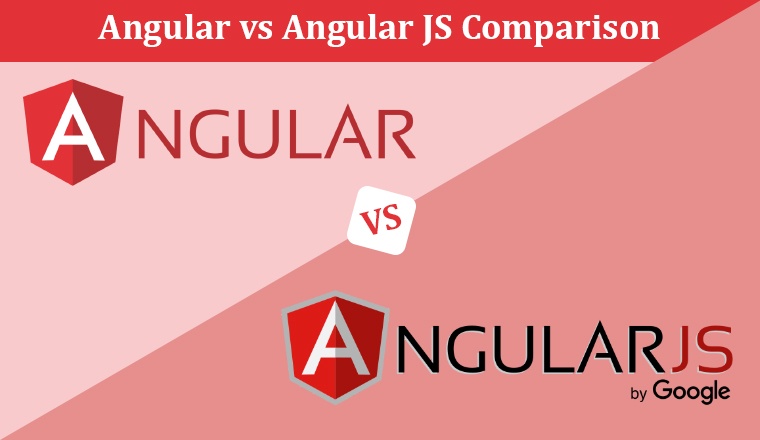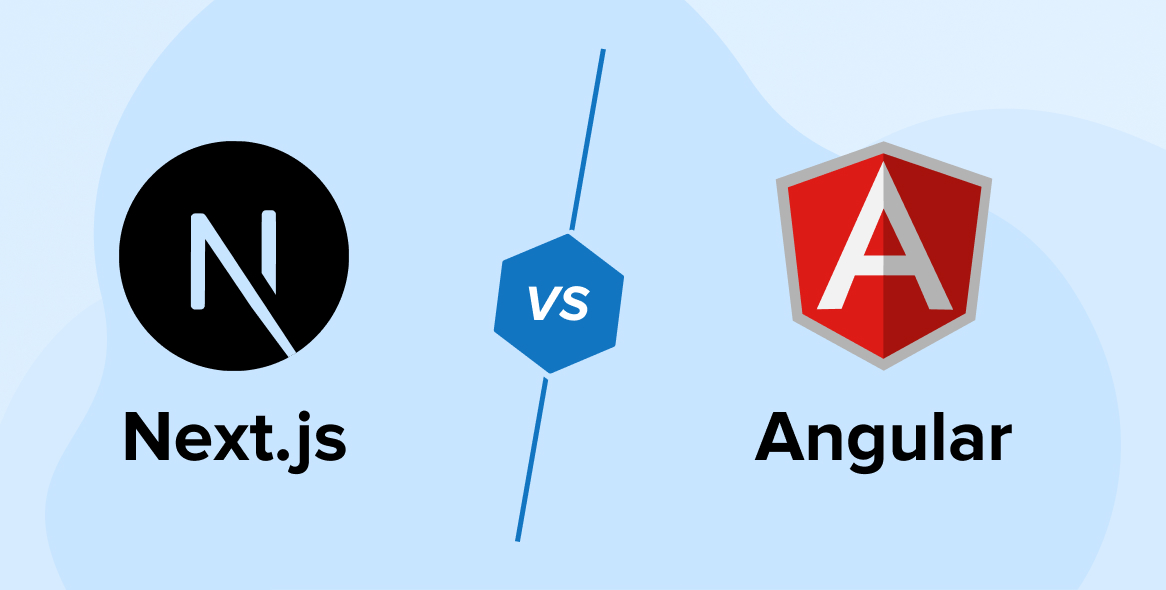
AngularJS was developed by Google in 2009 and later has been upgraded to Angular. One of the most important differences between Angular and AngularJS is that Angular is TypeScript based whereas AngularJS is JavaScript based frontend development framework. Angular uses components and later uses directives. Both are robust front end tools that come with some unique features and components directives that help the developers to build high performing and complex web applications. With this blog post, you will find more important differences and comparisons between Angular vs AngularJS.
1. JavaScript: What is It?
JavaScript is a very popular dynamic programming language that developers use to create web applications, gaming apps, and more. It enables web app developers to implement dynamic features on website pages that aren’t possible with only HTML and CSS. Basically, JavaScript is a scripting language that many browsers use for dynamically handling websites. In addition to this, if you want to see if any browser or website is using JavaScript, look out for the click-to-show dropdown menu, dynamically changing elements on the web page, and see if the site allows you to add extra content to a page. If all these features are available, the site is created using JavaScript.
2. TypeScript: What is It?

TypeScript is known as a superset of JavaScript. It builds on top of JavaScript. For instance, when a developer wants to work with both these languages, first of all, he needs to write the TypeScript code and then compile the TypeScript code into a simple & plain JavaScript code with the use of a compiler based on TypeScript. And once the plain JavaScript code is ready, one can easily deploy it to any environment that runs on JavaScript.
Besides this, the files created using TypeScript use the .ts extension and not the .js extension of JavaScript files. This technology uses the syntax of JavaScript.
3. Angular: What is It?
Angular is one of the most popular frameworks that enable developers to create unique applications. It is a perfect alternative to AngularJS. This open-source framework is developed by the Angular Team at Google. Developers use this framework to create dynamic web applications with the use of programming languages like TypeScript and HTML. Angular is an upgraded version of AngularJS with some important features like ease of development and advanced modular design.
When used with Angular best practices, Angular is one of the most robust front-end tools that enable programmers to write or rewrite clean and readable code. It is signified as Angular 2+ and beyond. Angular2 is a version that follows the core functionality and foundation of a set of TypeScript libraries that uses various ECMAScript 6 that enables the developers to import the applications.
4. Angular JS: What is It?

AngularJS is a popular JavaScript-based scripting framework. It was created in2009 and is also known as Angular 1. AngularJS is a widely used open-source framework that was maintained by a tech giant, Google, and its developer’s community. AngularJS comes with some unique filters, standard directives, and features that enable developers to ease the application development. It is popular because of the remarkable support it offers to develop the single-page web applications.
AngularJS fundamentally expands the HTML DPM with some additional features that enable the software development companies to create a responsive application for users. Besides this, it also gives developers access to features like the ability to change static HTML to dynamic HTML. Basically, the AngularJS framework is very useful in app development and it also helps to render the best improvements to the entire development approach. AngularJS renders the application for model-view-controller (MVC) architecture.
5. Angular vs AngularJS Comparison

Here are the major differences between Angular vs AngularJS framework –
| Components | Angular JS | Angular |
| Written Language | Angular JS is written in JavaScript. | Angular is written in Microsoft’s TypeScript |
| Architecture | Angular JS supports Model-View-Controller architecture. | Angular uses directives and components. |
| Mobile Support | It doesn’t support the mobile device’s browser. | It is supported by various mobile device browsers. |
| Dependency Injection | Angular JS doesn’t use the dependency injection concept. | Angular supports the dependency injection model. |
| Expression Syntax | In Angular JS, ng-bind is used to bind important data from view to model and another way round. | In Angular, all the properties enclosed in “[]” and “()” are used for data binding between model and view. |
| Routing | $routeprovider.when() is used to route the configuration in AngularJS. | @Route Configue{(..)} is used in Angular for routing configuration. |
| CLI | AngularJS doesn’t come with a CLI tool. | Angular comes with a CLI tool. |
| Structure | AngularJS is less manageable compared to Angular. | Angular comes with a better structure which enables the Angular developers to easily create and maintain large apps. |
5.1 Architecture of Angular vs AngularJS
AngularJS is a framework that supports Model-View-Controller design. Here, this design works as the central component in managing information, logical components, rules, and app behavior. Besides this, the Model-view-controller design has the capability to process the information in the model to produce the output.
On the other hand, when it comes to Angular, it uses directives and components with templates. In Angular, the directives are divided into two types: attributive directives and structural directives. Attribute directives are responsible for the changes in DOM’s appearance and behavior. Structural directives are responsible for better structure and the alteration of the DOM’s layout and this is done by changing its elements.
AngularJS is a framework that supports Model-View-Controller design. Here, this design works as the central component in managing information, logical components, rules, and app behavior. Besides this, the Model-view-controller design has the capability to process the information in the model to produce the output.
On the other hand, Angular supports Model-View-View-Controller architecture. This design enables Angular to support two-way data binding between the View and View model. Besides this, Angular uses directives and components with templates. In Angular, the directives are of two types: attributive directives and structural directives. Attribute directives are responsible for the changes in DOM’s appearance and behavior. Structural directives are responsible for better structure and the alteration of the DOM’s layout and this is done by changing its elements.
5.2 Mobile Support
When it comes to mobile-friendliness in this Angular vs AngularJS guide, AngularJS is a framework that does not have mobile support. This is because AngularJS comes with a simple component based architecture and the code in it cannot support mobile apps.
But on the other hand, Angular is great with mobile. Angular comes with dynamic web and single-page scripts which makes it exceptionally mobile-friendly.
5.3 Language
AngularJS framework is based on JavaScript. This means that the developers who are building user interfaces using AngularJS can get access to a few features like declarative templates using HTML.
While Angular is completely based on Typescript Language. It also uses other languages like Dart, ES5, and ES6 to write codes for creating mobile and web applications.
Let’s learn more about JavaScript and TypeScript by going through their major differences –
| JavaScript | TypeScript |
| JavaScript is a scripting language. | TypeScript is an object-oriented programming language. |
| In this language, numbers and strings are the objects. | In this language, numbers and strings are the interfaces. |
| JavaScript doesn’t support interfaces. | TypeScript supports interfaces. |
| JavaScript doesn’t support optional parameters. | TypeScript supports optional parameters. |
| It doesn’t support modules and generics. | It supports modules and generics. |
| JavaScript highlights the errors in the code at runtime. | TypeScript highlights all the code’s errors during the development process. |
5.4 Expression Syntax
When it comes to expression syntax, both Angular and AngularJS use directives.
But AngularJS uses a pack of directives and it uses ng-model to bind the data.
While, on the other hand, Angular has a standard directive, and it uses () and [] to bind attributes and for managing data between view and model.
5.5 Performance and Speed
AngularJS became popular amongst the developers because of the two-way data binding feature that it offers. This feature enables two-way binding implementation after keeping a check on each scoped variable. As the running of this digest cycle is random, it helps in growing the program’s size and eventually this impacts the app’s performance.
When it comes to Angular, it is known as much faster than AngularJS and the reason behind it is that Angular has a flux architecture where any change is detected through the unidirectional data flow(one way binding). And this process makes the applications much faster.
5.6 Routing
AngularJS is a framework that uses $routeProvider.when() to offer routing configuration and information.
On the other hand, Angular is a framework that uses a simple path. With Angular, the developers can use URLs to imitate directives and get access to the client view or start using @RouteConfig{(…)} to define routing information.
5.7 Dependency Injection
Dependency Injection means a design where a function or object receives other functions or objects that it depends on. This concept comes with various benefits like reduced dependency carrying, reduced dependencies, more testable code, more readable code, and more reusable code. Seeing these benefits, all the latest technologies use this concept, let’s see if this is the case with Angular JS and Angular.
AngularJS framework doesn’t promote dependency injection and it uses directives as an alternative.
Angular uses a hierarchical dependency injection system and unidirectional change detection to boost performance.
5.8 Management
In this Angular vs AngularJS comparison guide, AngularJS is difficult to understand and work with the type of framework as the size of its source code increases.
Whereas Angular is a straightforward framework with a better structure. It enables the developers to create progressive web apps with ease because the management of Angular is perfect which offers a great advantage to the framework.
6. Pros and Cons of Angular
6.1 Pros of Angular
MVVM Architecture Implementation
Angular framework was originally embedded with MVC architecture but it is more of an MVVM software concept. It doesn’t allow the web app developers to split the app into different MVC components. With this architecture, creating code that has the capability to unite the components. Besides this, using MVVM(Model-View-ViewModel) architecture is better than an MVC (Model-View-Controller) one. And one of the main reasons behind it is that the MVVM model supports two-way data binding and it also allows automatic propagation which helps in changing the information within the ViewModel’s state to the view.
In addition to this, when it comes to creating large web applications, the process might contain a lot of functional and logical components. Angular is a comprehensive solution that simplifies the way of managing these components. The design architecture of Angular is such that it helps the developers locate and develop the code easily.
Modules
In Agular, a module is a mechanism that combines components, directives, pipes, and services that are similar or related. This is done in a way that it can be combined with other modules to develop single-page applications or big apps. This is why an Angular-based app can be considered as a puzzle.
Services and Dependency Injection (DI)
A component or service might require other dependent services to complete a task. This is where the Dependency Injection design pattern comes into the picture. It is useful to fulfill these dependencies. It has the capability to divide the tasks among different services.
6.2 Cons of Angular
Limited SEO options
One of the disadvantages of Angular is that it comes with limited SEO options. This means that Angular apps have poor accessibility for search engine crawlers. But to improve this, the developers need to have knowledge about Angular SEO and the possible solutions like dynamic rendering, setting metadata, and more that make sites rank.
Angular is verbose and complex
Angular developers generally have a complaint about the verbosity of the instrument and this is the same issue that developers are facing since AngularJS.
Steep learning curve
When it comes to working as an Angular developer, every newbie faces an issue. Working with Vue or React is easier after learning JavaScript than working with Angular and the reason behind it is the array of topics, functionalities, and aspects need to cover in this framework is quite large.
7. Pros and Cons of AngularJS
7.1 Pros of AngularJS
Two-way Data Binding
The AngularJS framework was created using the Model-View-Controller (MVC) architecture. This means that if there is a change in one model, there will be a change in the view. Here, the two-way data binding has enabled the developers to significantly cut down on the web app development time as there is no need to synchronize the model and the view every time something changes.
Big Community
AngularJS comes with extensive community support. This is why there is ample availability of training materials in the market. The community of the AngularJS framework ensured that web developers could find solutions to any of the problems in their Angular project.
The Dependency Injection
Here dependency means that the code is dependent on each other. This means that one change in dependency results in a change in another component. AngularJS offers to decouple component features. This means that the dependencies in AngularJS have made the components reusable and easier to manage.
Directives
AngularJS has the capability to extend HTML with the use of new attributes called directives. Directives in AngularJS have transformed the specific DOM (document object model) and this has helped the developers to create rich content with the use of existing HTML code.
7.2 Cons of AngularJS
Performance
AngularJS hasn’t been able to offer good performance when it comes to dynamic apps. And this is why Angular was launched.
AngularJS reached the end of life
AngularJS has almost reached the end of life since the long-term support from the community ceased. Because of this, the users weren’t able to seek support from the services firms.
Mandatory JavaScript Support
Many systems have disabled AngularJS after Angular was released, so they aren’t able to access an AngularJS website.
8. Conclusion
As seen in this blog, Angular vs AngularJS is one of the top comparisons that the majority of JavaScript developers search for. Both Angular and AngularJS are powerful frameworks as they are developed by Google and they come with some amazing features that might be the same in both of them. But these frameworks also have some notable differences that every developer needs to know before selecting any one of them for the next app development project.
Angular is known as the successor of AngularJS and has the capability to offer better performance and features. On the other hand, AngularJS is updated regularly with new features and enhancements but it cannot catch up with the modern approach that Angular has to offer. This is why, nowadays, the majority of app developers choose Angular over AngularJS, if they want to create modern apps for clients.






As a developer, I found this blog very useful. It gave me a better understanding of the pros and cons of each framework and helped me make an informed decision on which one to use.
Overall, a great resource for anyone looking to learn more about Angular and AngularJS. Highly recommend reading it!